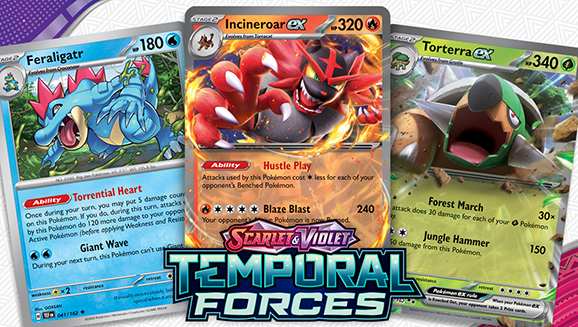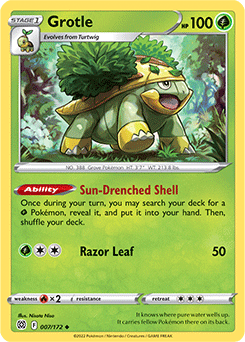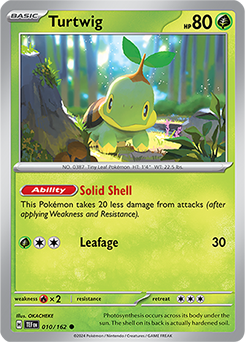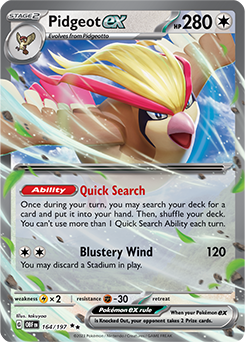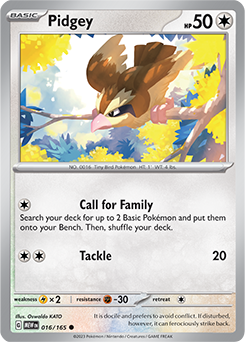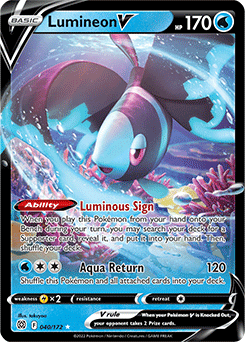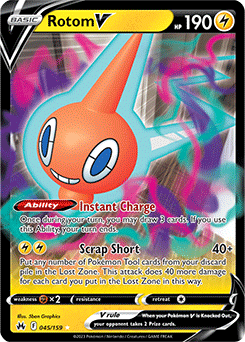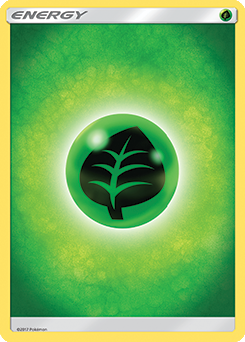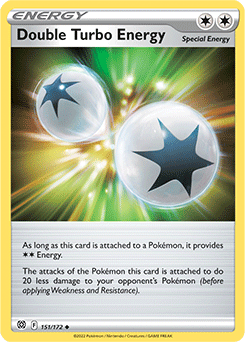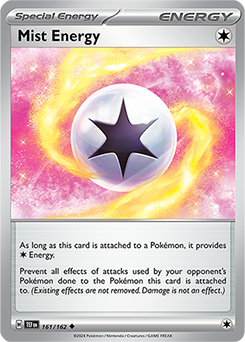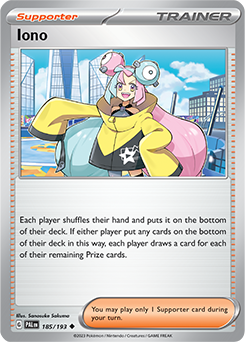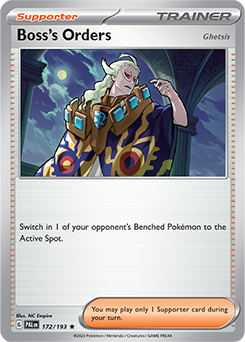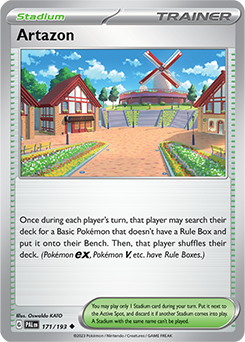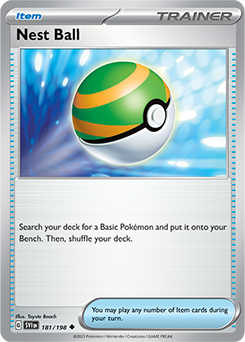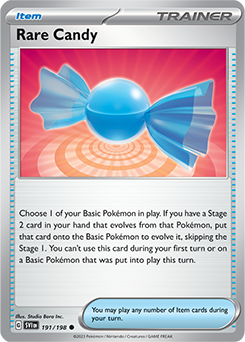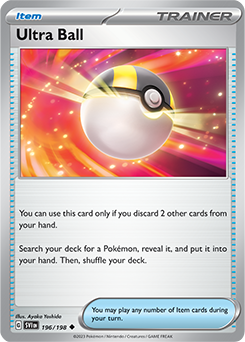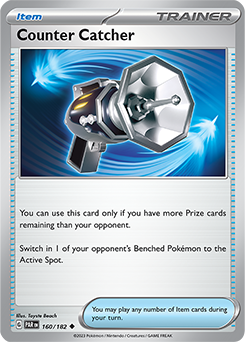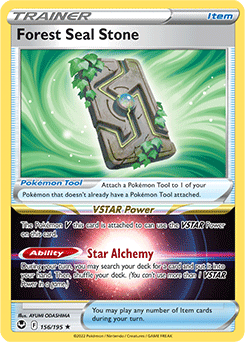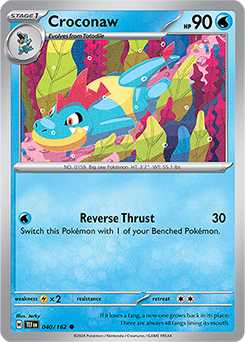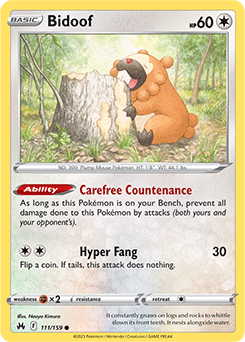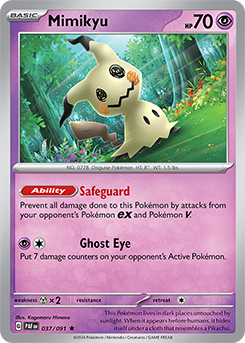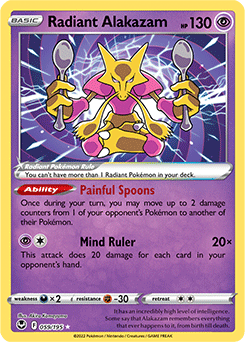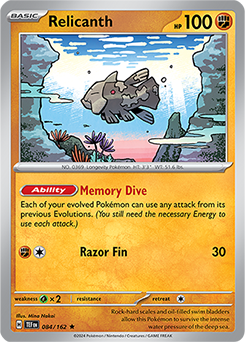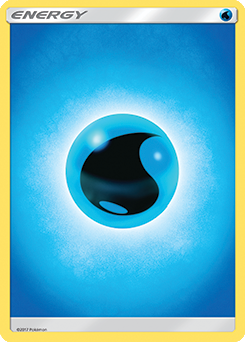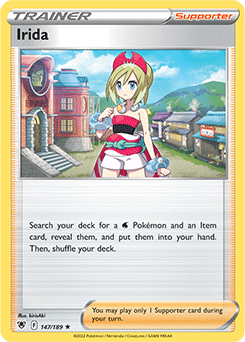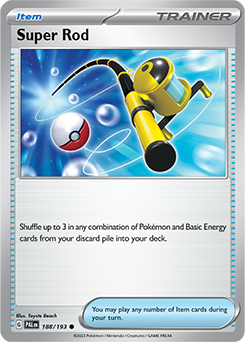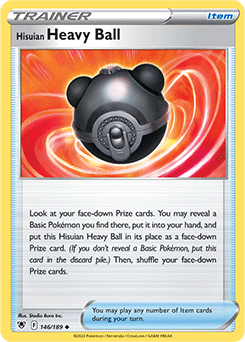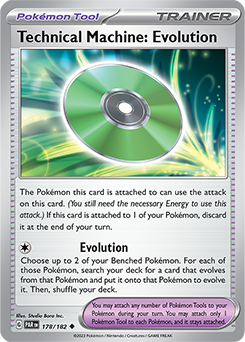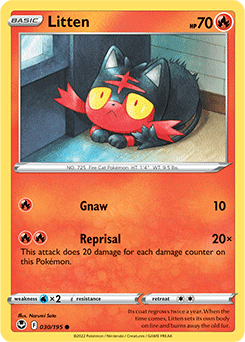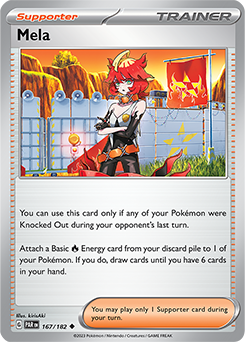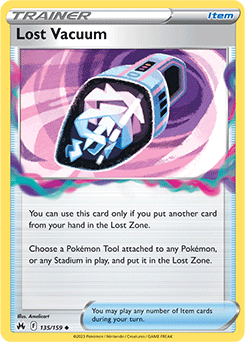The Pokémon TCG: Scarlet & Violet—Temporal Forces expansion introduces dozens of fun cards to build decks around. Remarkably, not all of these cards feature Pokémon that were originally discovered in the Paldea region. For this Triple Play, we’ve rounded up a trio of deckbuilding experts—Natalie Millar, Xander Pero, and Ross Cawthon—to look at Torterra ex from Sinnoh, Feraligatr from Johto, and Incineroar ex from Alola.
All three of these evolved first partner Pokémon have been in action for quite a while. But if you think you’ve seen everything that they have to offer, think again! New moves and Abilities, as well as help from powerful new cards in Scarlet & Violet—Temporal Forces, can help these classic Pokémon stand out at your next Pokémon League event or game night.
Torterra ex
Natalie Millar
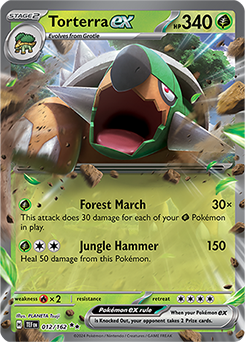
When we first look at Torterra ex, the main thing that jumps out is its 340 HP—the highest in the current Standard format. Plus, Torterra ex’s Jungle Hammer attack heals 50 damage from it while doing 150 damage to opponents! Clearly, when building a deck around Torterra ex, we want to lean into its tankiness as much as possible. Conceding Prize cards in the early game is okay: we can eventually win those back by absorbing hits with Torterra ex.
Thankfully, there are a lot of strong cards in the format that help us while we are behind on Prize cards, such as Iono and Counter Catcher. Iono shuffles both hands to the bottom and forces both players to draw cards equal to the number of Prize cards they have remaining, making it incredibly disruptive to any player who jumps to an early lead. With the focus on making a comeback and tanking later on with a powerful Torterra ex, I built this deck list.
It is important for any deck focusing on a Stage 2 Pokémon to have a solid consistency engine powering it. I chose to partner Torterra ex with Pidgeot ex, which looks a little weird because Pidgeot ex is also a Stage 2 Pokémon. However, Pidgeot ex has the Quick Search Ability, which lets you search your deck for any card and put it into your hand once per turn. This is useful at any point in the game, you can find ways to set up your Torterra ex or find Iono to disrupt your opponent.
Setting up your initial Pidgeot ex isn’t the easiest task, so I also chose to cast Rotom V in a similar role as it plays in the currently popular Charizard ex deck. Rotom V’s Instant Charge Ability, which lets you end your turn and draw 3 cards, synergizes well with the strategy of our deck, letting you acquire more cards and slowly set up a Torterra ex. Similarly, we also play four copies of Gift Energy. If you attach Gift Energy to a Pokémon and just leave it in your Active Spot, your opponent is forced into a conundrum: if they Knock Out the Active Pokémon, you get to draw cards until you have 7 in your hand! If they don’t take the Knock Out, that’s also a successful outcome because you’ve essentially gained a turn.
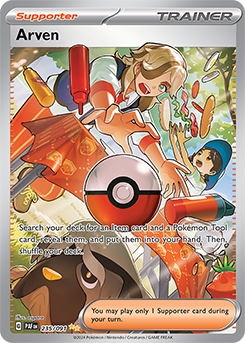
Like the Charizard ex deck, I chose to go with four copies of Arven to help our deck set up. Arven lets us search for an Item card and a Pokémon Tool card: the Item is usually something to help us set up a Torterra ex or a Pidgeot ex, and the Tool is usually Forest Seal Stone, which should allow our Rotom V or Lumineon V to search for any card with the Star Alchemy VSTAR Power.
One unfortunate aspect of Torterra ex is that both of the Turtwig cards (Brilliant Stars and Temporal Forces) available in the Standard format have 80 HP, meaning that it can’t be found with Buddy-Buddy Poffin. Because we can’t use Buddy-Buddy Poffin in this deck, I’ve included four Nest Ball and four Artazon to help us find our Pokémon on the first few turns. Thankfully, the Grotle from Sword & Shield—Brilliant Stars has the Sun-Drenched Shell Ability, which lets you search your deck for a Grass-type Pokémon once per turn. This helps you to set up other Turtwig and to set up your initial Torterra ex, too!
One card that I chose not to include in this deck is Manaphy. While this might seem risky because we could be vulnerable to Radiant Greninja’s Moonlight Shuriken attack, the new Turtwig from Scarlet & Violet—Temporal Forces has the Solid Shell Ability, which makes it take 20 less damage from attacks. With its 80 HP, this makes Moonlight Shuriken only do 70 damage to your Turtwig, which could save it from a one-hit Knock Out!
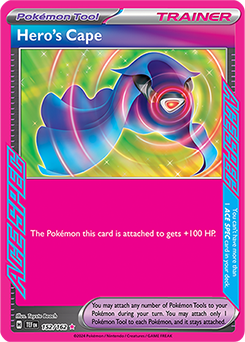
In addition to Forest Seal Stone, I also chose to play the ACE SPEC Tool card Hero’s Cape. Hero’s Cape gives the Pokémon it’s attached to +100 HP, which gives our Torterra ex a whopping 440 HP! This makes it almost impossible for any Pokémon to one-hit KO it with regular damage, forcing your opponent to take down your Torterra ex in two or three attacks. Some attacks from Pokémon in the Standard format can effectively Knock Out an opposing Pokémon automatically, such as Roaring Moon ex’s Frenzied Gouging or Giratina VSTAR’s Star Requiem. Because of this, I also chose to include two copies of Mist Energy, which protects your Torterra ex from all effects of attacks. While it’s possible your Hero’s Cape can get sent to the Lost Zone by a Lost Vacuum, without Path to the Peak in the format, many decks aren’t choosing to include Lost Vacuum at all. I also chose to play a Professor Turo’s Scenario to pick up a damaged Torterra ex. In a pinch, you can also pick up your Lumineon V or your Rotom V.
When you play this Torterra ex deck, be prepared for a grind. You will be poking at your opponent’s Pokémon for about 130 to 150 damage at a time, all while soaking up hits from them. To counter this, stay on the lookout for opportunities to bring up a Pokémon that can’t attack. Then you can use Jungle Hammer to take a two-hit Knock Out without getting attacked back—and heal more damage than normal on top of that to boot. Good luck, and don’t be afraid to have a slow start!
Xander says: I like how Natalie focuses on Torterra ex’s Jungle Hammer attack. With Double Turbo Energy, Mist Energy, and Gift Energy, you can fulfill the attack cost in multiple ways. Another version of the list could lean on Torterra ex’s Forest March by including more Grass-type Pokémon. One such inclusion could be Radiant Venusaur, which can refill your hand in a pinch. Instead of utilizing natural healing from the attack, you could instead make use of Professor Turo’s Scenario to continuously cycle in fresh Torterra ex.
Ross says: What I find most interesting about Natalie’s list are the four Gift Energy. On the surface, Gift Energy doesn’t seem like it would fit well with Torterra ex—it doesn’t help fuel Torterra ex’s Forest March attack, and it’s less efficient in fueling the Jungle Hammer attack than attaching a Grass Energy and a Double Turbo Energy.
But there is a synergy here when you take into account Natalie’s description of playing a Gift Energy early, daring your opponent to attack the Pokémon it’s attached to and activating Gift Energy’s drawing cards effect. If your opponent ignores it, you can attach a Grass Energy next turn and use Forest March (which was true without the Gift Energy). However, it’s the following turn that—now due to the Gift Energy—you’ll need an additional Energy before you can use Jungle Hammer than you would have been without it. So, within a two-turn span, Gift Energy can still act as an ‘efficient’ attachment. This type of plan is likely too slow for most decks that trade Knock Outs quickly, but this unique strategy could work on a slow deck like Torterra ex.
Feraligatr
Xander Pero
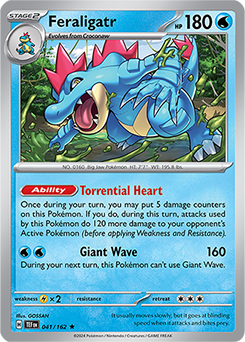
One of the perhaps more underrated Pokémon in the newly released Scarlet & Violet—Temporal Forces is Feraligatr, the Water-type first partner Pokémon from the Johto region. Its Ability, Torrential Heart, boosts Feraligatr’s damage by 120 for the small price of placing 5 damage counters on itself. With this bonus, Feraligatr’s Giant Wave reaches 280 damage, which is enough to Knock Out most Pokémon VSTAR and some Pokémon ex. However, we actually have two other attacks to choose from thanks to Relicanth! Its Memory Dive Ability allows each of your evolved Pokémon to use the attacks of its previous Evolutions. Lucky for us—and perhaps by design—Totodile and Croconaw both have interesting attacks.
Totodile’s Big Bite prevents the Defending Pokémon from retreating, which can create a win condition against decks with non-attacking support Pokémon. In contrast, Croconaw’s Reverse Thrust switches this Pokémon with one on your Bench. Afterward, we can promote a disruptive Pokémon like Klefki or Mimikyu, mimicking a hit-and-run strategy. With all three attacks at our disposal, we can choose the best one for the current situation.
Here’s a deck list centered around Feraligatr:
I chose the Arven engine because it provides easy access to Technical Machine: Evolution. With this TM, we can evolve into Feraligatr without the use of Rare Candy by our second turn. Additionally, Bibarel provides ample draw support throughout the game. I like the search Supporter plus Bibarel engine because of its versatility; other decks that rely purely on Professor’s Research can't guarantee finding a specific card, whereas Arven and Irida can do it with ease.
Attacking Options
Totodile’s Big Bite can collect Prize cards by targeting Bench-sitting Pokémon like Manaphy or Jirachi. By utilizing Radiant Alakazam, we can continuously damage one Pokémon while moving the damage to the opponent’s Benched Pokémon, permanently trapping the one Pokémon in the Active Spot. This strategy can prove effective near the end of a game when the opponent has exhausted all of their switching resources. In the first one or two turns, you can use it to buy time to set up.
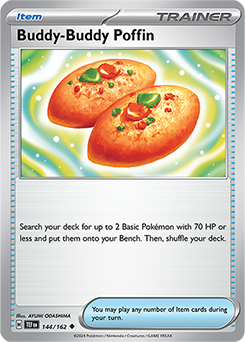
Unless you need to use Giant Wave to pick up a big Knock Out, your best attack is likely Reverse Thrust. My deck list includes two Klefki and one Mimikyu, which can be strong pivot Pokémon depending on the situation. Assuming they aren't Knocked Out, you can use Rescue Board to retreat the Klefki and Mimikyu. Both of these Pokémon can be found with Buddy-Buddy Poffin, making them easily accessible at all points in the game. Switching into these Pokémon not only provides an annoying effect for the opponent to deal with, but it also protects your Feraligatr. Consider a pairing with Iono, which can make it harder for the opponent to find Boss’s Orders.
The final and most powerful attack in our toolbox is Giant Wave. We should use this when needing to Knock Out a crucial Pokémon. Paired with Maximum Belt, Giant Wave can even Knock Out a massive 330-HP Charizard ex. Keep in mind that Giant Wave is our only attack that requires 2 Water Energy, so be sure to attach Energy whenever possible.
Tips
Even though our list only plays two copies of Feraligatr, we should be well-supplied because of the three Super Rod. These are crucial for recycling Feraligatr and its Evolution chain, as well as Mimikyu and Klefki after they are Knocked Out. Moreover, don't be afraid to give up the first Prize card. Our deck requires time to evolve into Feraligatr, and you catch up later in the game by stalling with Mimikyu or trading favorably with Giant Wave.
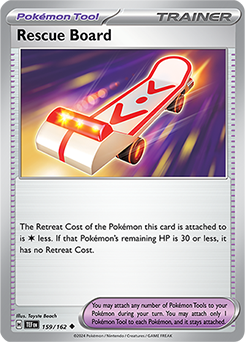
Tools streamline our engine, as Rescue Board, Technical Machine: Evolution, and Forest Seal Stone greatly contribute to our deck’s success. Try to hold onto your Rescue Board cards until they are actually necessary. Essentially, this means waiting until you need to retreat the Active Pokémon on the turn after using Reverse Thrust. This ensures you don't lose the Rescue Board before getting value from it. Additionally, it can be smart to leave Forest Seal Stone in the deck rather than on the field against decks that play Lost Vacuum. This way, you can continually threaten Forest Seal Stone with Arven, potentially causing your opponent to target the Pokémon V rather than your Feraligatr.
This deck does have its weaknesses, however. If you cannot set up more than one Croconaw, your opponent can continually target it, stopping your progression into Feraligatr. Moreover, you may be prone to hand disruption like Judge or Iono if you are without Bibarel. Finally, an early Amp You Very Much from an opposing Iron Hands ex can result in too large of a deficit to come back from.
Overall, I’ve enjoyed the deck due to its versatility. Most decks focus on one or sometimes two main attackers, but here we’re able to utilize three. I hope you’ll give Feraligatr a whirl!
Natalie says: I like the way Xander has approached this deck. Totodile and Croconaw both have attacks that do very little damage but that can add up over time by being more and more annoying. Without Escape Rope in the format, Pokémon like Klefki and Mimikyu become much stronger, as your opponent is forced to use a Boss’s Orders to get around them. Klefki especially gets much stronger against Lost Zone decks, since Mischievous Lock shuts off their main early attacker Cramorant. Cramorant relies on its Lost Provisions Ability to reduce the Energy cost of Spit Innocently, which normally tears apart single-Prize decks. Still, Klefki shuts off that Ability and forces Lost Zone players to attach Energy for their early attack!
Ross says: Xander really went in a different direction than I was expecting with Feraligatr. When I saw this card, I saw the efficient 280-damage Giant Wave attacks and wanted to focus on that with something like Palkia VSTAR. Xander’s deck actually seems much more annoying to play against though, creating a clever control style of deck from the Feraligatr line. The potential of 150 damage and moving to the Bench with Reverse Thrust is really great. These types of effects typically do far less damage.
I do wonder if this deck should have some sort of healing to deal with the five damage counter cost of Torrential Heart. This slower, disruptive strategy may use that effect more than other builds, and that self-damage could start to become relevant. Perhaps it could use Jirachi from Scarlet & Violet—Paradox Rift to deal with the popular Sableye from Sword & Shield—Lost Origin which could really take advantage of this extra damage on your field.
Incineroar ex
Ross Cawthon
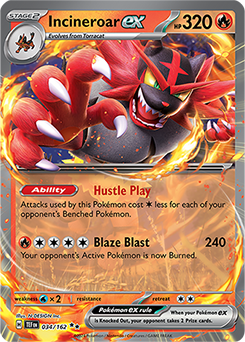
The first thing you notice about Incineroar ex is its Hustle Play Ability, which makes its attacks require less Energy for each of your opponent’s Benched Pokémon. This is a very strong Ability in the current Pokémon TCG era, as almost every deck relies on having a large Bench of “support” Pokémon with Abilities, such as Bibarel, Pidgeot ex, Mew ex, Lumineon V, or Rotom V.
With Hustle Play, Incineroar ex becomes an efficient attacker, able to do at least 260 damage with its Blaze Blast attack (240 plus at least 20 more thanks to the Burn condition), for potentially just 1 or 2 Energy. Incineroar ex may need help against higher HP Pokémon such as the popular Charizard ex that has 330 HP. Fortunately, another Pokémon from Scarlet & Violet—Temporal Forces may hold the key to even greater attack power for Incineroar ex: Relicanth.
Relicanth’s Memory Dive Ability allows your Pokémon to use any attacks from its previous Evolutions. This is an effect that has been present a few other times in the history of the Pokémon TCG, in cards like Memory Berry, Shining Celebi, and Shrine of Memories. Relicanth combos well with Litten from Sword & Shield—Silver Tempest, which has the Reprisal attack that does 20 damage for each damage counter on itself. With a 70-HP Litten, this attack can’t possibly do that much damage. However, with this attack available on a 320-HP Incineroar ex, the damage potential is quite high. For example, a Charizard ex hitting Incineroar ex for 180 damage could then immediately be KO’d by Reprisal for 360 damage!
Here is the list I’ve gone with:
Beyond the choice of Relicanth, our next key choice is what type of support Pokémon to include. Common inclusions in the Standard format for a deck like this would either be Bibarel or Pidgeot ex. After testing a bit of both, I decided to go with Pidgeot ex. Searching out 1 card per turn with Quick Search just brings so much consistency to the deck. It also helps with building out the list, allowing me to play more single copies of key cards, particularly Trainers and Energy. In a Bibarel deck, there are no easy ways to find key cards like Magma Basin or Double Turbo Energy, meaning you need to play more of those cards and cut others.
I also decided on the package of Lumineon V/Rotom V/Forest Seal Stone with three Arven. Each of these Pokémon help set up your deck, and with Arven and Forest Seal Stone working together, your Arven cards can be treated as one Item card plus one additional card. This makes it far easier to get a Stage 2 Pokémon out, whether it is Pidgeot ex or Incineroar ex, as Arven can now get you the Rare Candy and the Pokémon.
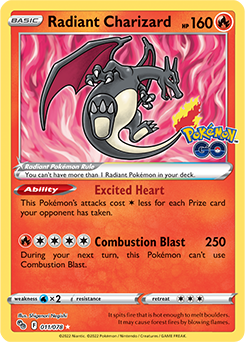
Rounding out the Pokémon choices, Radiant Charizard is still one of the most powerful Radiant Pokémon in the game. Just about any Fire-type deck should play this card. Getting 250 damage from a single-Prize Basic Pokémon—and needing just one to two Energy late in the game to power it—shows incredible efficiency. Manaphy is here to protect your Litten and Pidgey from the popular Radiant Greninja. Finally, I chose the Torracat from Scarlet & Violet—Temporal Forces for its 100 HP instead of the 80-HP Torracat from Sword & Shield—Silver Tempest. I’ll note that the latter Torracat has an interesting attack, Gritty Claws, which can pair well with Incineroar ex and Relicanth. Usually, you’ll find yourself using Rare Candy with this deck: I just wasn’t finding myself using Gritty Claws often enough to switch.
When it comes to Trainers, Arven is a great consistency card for Stage 2 decks. These decks often don’t want to discard Rare Candy or Stage 2 Pokémon, so I’m going with four Iono instead of four Professor’s Research. Mela is also a cool Supporter for a deck like this, giving you an extra Energy and some draw power. With Pidgeot ex, playing a single copy is always accessible.
I have several different Trainers, some as just one or two copies, which all can be found with either Arven or Pidgeot ex. Switch and Professor Turo’s Scenario help you maneuver your Pokémon to the Active Spot in different situations. With the return of ACE SPEC cards in Scarlet & Violet—Temporal Forces, choosing the right one to include will be key in any deck. I’ve chosen Maximum Belt to give Incineroar ex some more attack power, particularly when it is using Blaze Blast. One great play that can be pulled off when behind is using Arven for Counter Catcher and Maximum Belt, and getting a one-hit Knock Out on an opposing Pidgeot ex with Blaze Blast! I think Maximum Belt will be a particularly strong card in the Standard format, and it’s one reason I am playing a Lost Vacuum card—so my opponents can only use their Maximum Belt once.
In addition to Basic Fire Energy, I also have one Double Turbo Energy. I’ve found this to be useful when opponents try to limit their Bench size, making Incineroar ex’s Blaze Blast cost more Energy.
Overall, Incineroar ex is an intriguing card with a great Ability, and a few attack options thanks to Relicanth. Your opponents can easily get purrplexed trying to manage their Bench size, and avoiding putting damage on Incineroar ex.
Natalie says: I think the inclusion of Relicanth brings a new dimension to Incineroar ex, normally it is very difficult to take a one-hit Knock Out on a Pokémon with 320 HP, so many players just resort to using two attacks instead. However, Litten’s Reprisal attack forces opponents into a tricky situation. You don’t even have to use the attack for it to impact the game, as the mere presence of Reprisal forces your opponent to make sub-optimal decisions as to where they direct their attacks. I also like the inclusion of Mela a lot here—it helps you pull off surprise attacks against opponents who are careful with their Bench!
Xander says: I didn’t know that Ross and I would end up with such similar decks, both utilizing Arven and Relicanth! In any case, that goes to show how it’s possible to make use of Feraligatr and Incineroar ex’s versatile Abilities alongside the attacks of their previous Evolutions. Ross’s decision to include a full four copies of Rare Candy works for his deck because his additional attack is only on Litten, not Torracat. I’m sure you can catch many opponents by surprise with a powerful Reprisal!
For more Pokémon TCG strategy and analysis, visit Pokemon.com/Strategy.

Natalie Millar
Natalie has been playing Pokémon casually since late 2013 but started attending more competitive tournaments in late 2017. She won the first Regional Championships after the pandemic in her home city of Brisbane, Australia, and has been attending most major tournaments since. Outside of Pokémon, she studied psychology, but it doesn’t help with reading opponents as much as you would think. You can find her at most major tournaments and can follow her on X at @nataliem9999.

Xander Pero
Xander Pero is a contributing writer for Pokemon.com. He was an avid fan until discovering sanctioned tournaments in 2009. He formerly traveled often for the Top 16 circuit, but now spends his time focusing on university, where he studies industrial engineering. You can find him at various tournaments, as well as on Twitter at @xanderpero.

Ross Cawthon
Ross Cawthon is a longtime player, starting to play tournaments in 2000. He is the only player to compete in all 19 Pokémon TCG World Championships, finishing as a finalist in 2005 and 2011, and a semifinalist in 2016. He is known for creating many new “rogue” decks over the years. Ross has a Ph.D. in astrophysics and studies dark energy (not to be confused with Darkness Energy cards).
